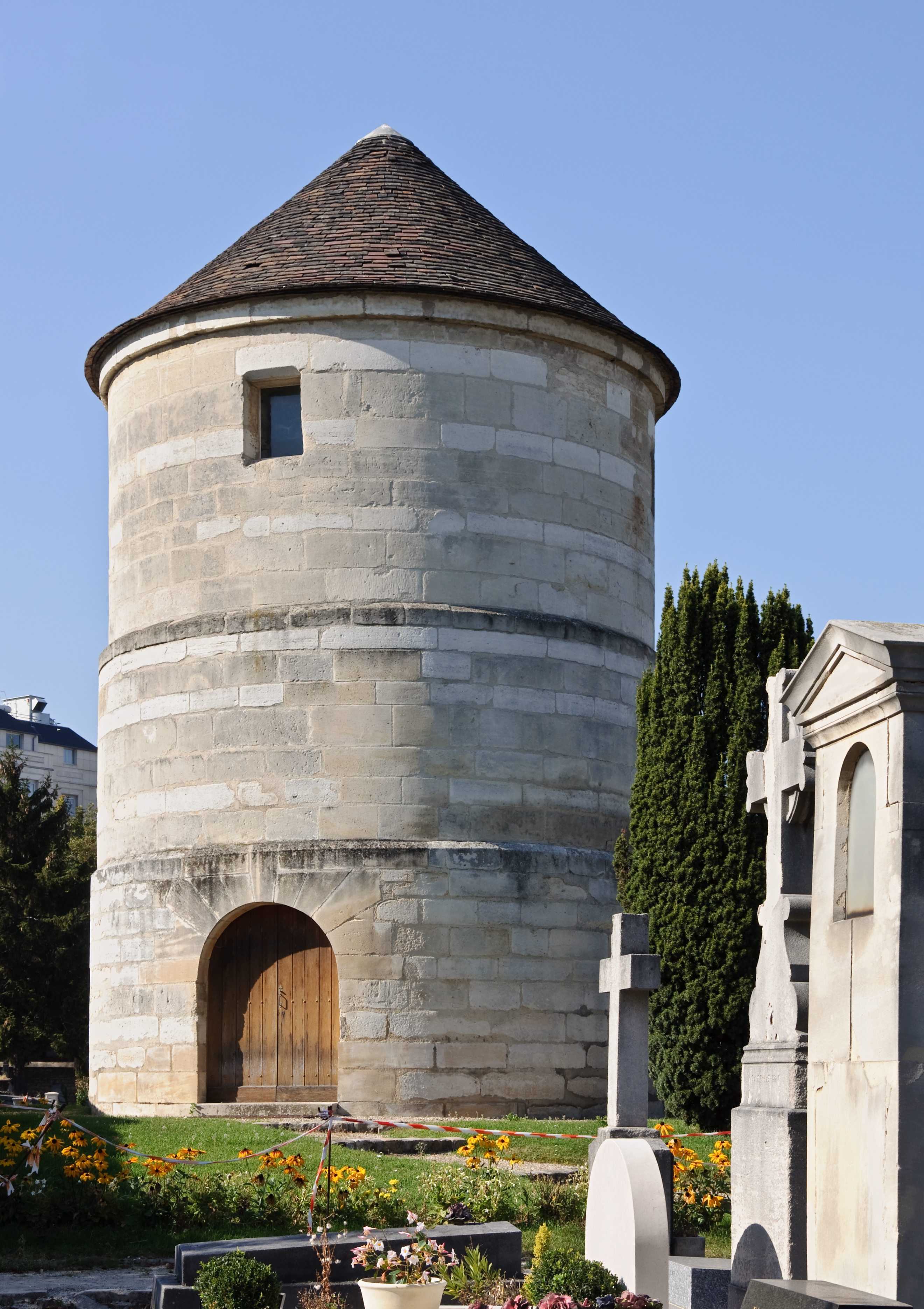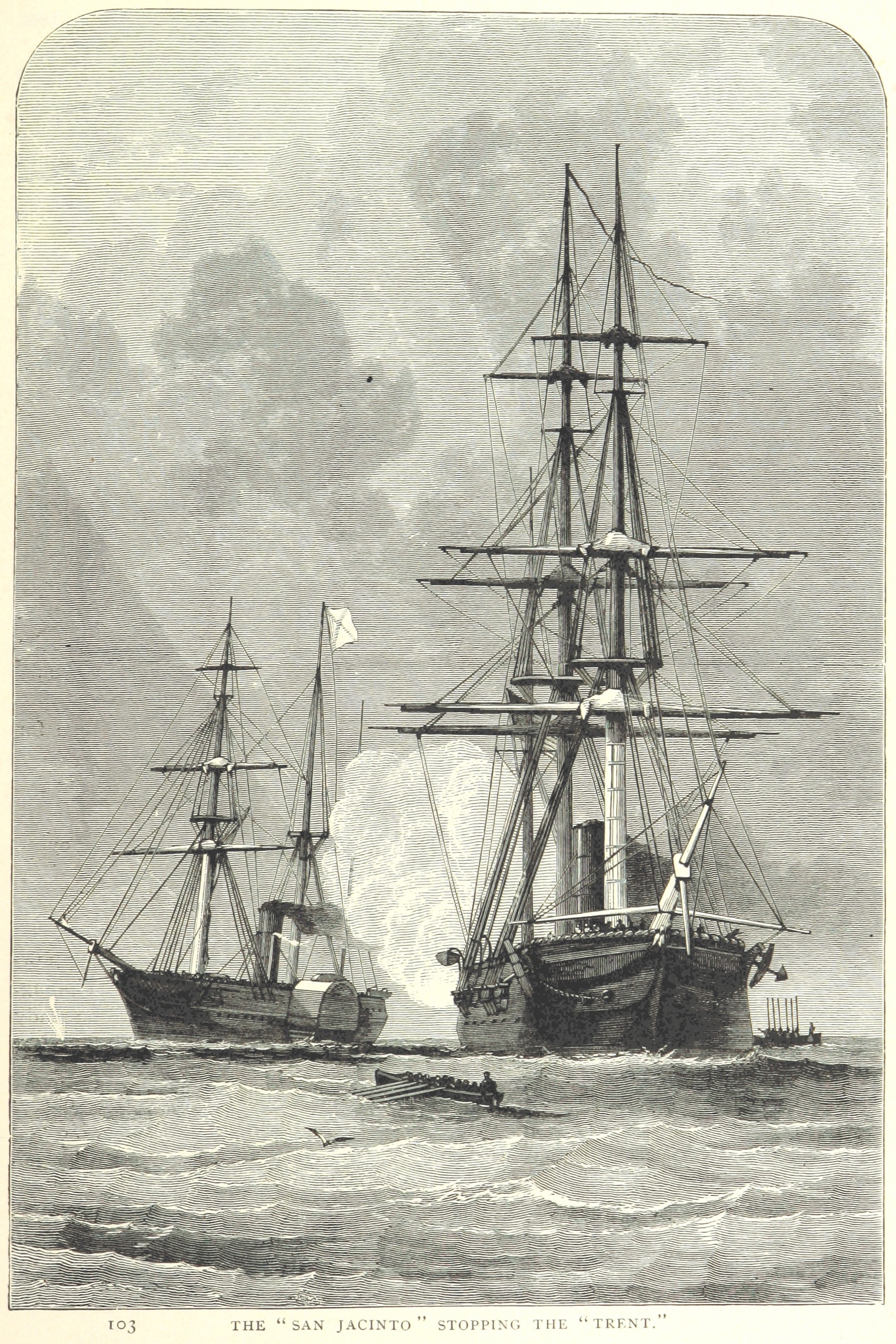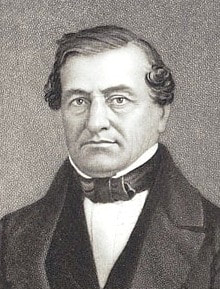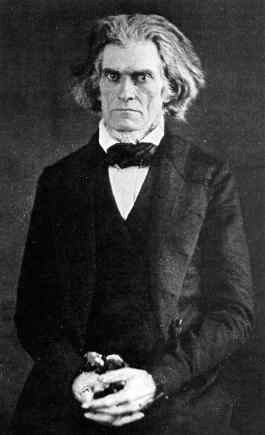|
Ambrose Dudley Mann
Ambrose Dudley Mann (April 26, 1801November 15, 1889) was the first United States Assistant Secretary of State and a commissioner for the Confederate States of America. Early life Mann was born on April 26, 1801, in Hanover Courthouse, Virginia. He studied at the United States Military Academy but left before he graduated. US government service He later became US consul to Bremen in 1842 and was appointed to negotiate commercial treaties with Hanover, Oldenburg, and Mecklenburg in 1845 as well as all the German states except Prussia in 1847. In 1849, he became commissioner to Hungary and in 1850, he became US Consul to Switzerland, where he negotiated a reciprocity treaty. He then returned to the United States, where he was appointed as the first Assistant Secretary of State in 1853; he served until 1855. Civil War During the American Civil War, he sided with the Confederacy and devoted himself especially to the development of the material interests of its states. On March 16, ... [...More Info...] [...Related Items...] OR: [Wikipedia] [Google] [Baidu] |
William Hunter (Assistant Secretary Of State)
William Hunter, Jr. (1805– July 22, 1886) was a politician and diplomat from Rhode Island. He was a confidential clerk to Secretary of State John Clayton in the United States Department of State from 1849 to 1850, serving with George P. Fisher. He had served as acting Secretary of State on three occasions, once in 1853, again in 1860, and to temporarily substitute for Secretary William H. Seward''The Daily Age'', "Official Announcement of the Induction of President Johnson," Philadelphia, April 17, 1865, p. 1 after his injury in a carriage accident and subsequent wounding in an attack concurrent with the assassination of Abraham Lincoln. He also served as Chief Clerk of the State Department from 1852 to 1855, Assistant Secretary of State Assistant Secretary of State (A/S) is a title used for many executive positions in the United States Department of State, ranking below the under secretaries. A set of six assistant secretaries reporting to the under secretary for politi ... [...More Info...] [...Related Items...] OR: [Wikipedia] [Google] [Baidu] |
United States
The United States of America (U.S.A. or USA), commonly known as the United States (U.S. or US) or America, is a country primarily located in North America. It consists of 50 states, a federal district, five major unincorporated territories, nine Minor Outlying Islands, and 326 Indian reservations. The United States is also in free association with three Pacific Island sovereign states: the Federated States of Micronesia, the Marshall Islands, and the Republic of Palau. It is the world's third-largest country by both land and total area. It shares land borders with Canada to its north and with Mexico to its south and has maritime borders with the Bahamas, Cuba, Russia, and other nations. With a population of over 333 million, it is the most populous country in the Americas and the third most populous in the world. The national capital of the United States is Washington, D.C. and its most populous city and principal financial center is New York City. Paleo-Americ ... [...More Info...] [...Related Items...] OR: [Wikipedia] [Google] [Baidu] |
Montparnasse Cemetery
Montparnasse Cemetery (french: link=no, Cimetière du Montparnasse) is a cemetery in the Montparnasse quarter of Paris, in the city's 14th arrondissement. The cemetery is roughly 47 acres and is the second largest cemetery in Paris. The cemetery has over 35,000 graves and approximately a thousand people are buried here each year. The cemetery contains 35,000 plots and is the resting place to a variety of individuals including political figures, philosophers, artists, actors, and writers. Additionally, in the cemetery one can find a number of tombs commemorating those who died in the Franco-Prussian war during the siege of Paris (1870–1871) and the Paris Commune (1871). History The cemetery was created at the beginning of the 19th century in the southern part of the city. At the same time there were cemeteries outside the city limits: Passy Cemetery to the west, Montmartre Cemetery to the north, and Père Lachaise Cemetery to the east. In the 16th century the intersecting road ... [...More Info...] [...Related Items...] OR: [Wikipedia] [Google] [Baidu] |
Chantilly, Oise
Chantilly ( , ) is a commune in the Oise department in the Valley of the Nonette in the Hauts-de-France region of Northern France. Surrounded by Chantilly Forest, the town of 10,863 inhabitants (2017) falls within the metropolitan area of Paris. It lies 38.4 km (23.9 miles) north-northeast of the centre of Paris and together with six neighbouring communes forms an urban area of 37,254 inhabitants (2018). Intimately tied to the House of Montmorency in the 15th to 17th centuries, the Château de Chantilly was home to the Princes of Condé, cousins of the Kings of France, from the 17th to the 19th centuries. It now houses the Musée Condé. Chantilly is also known for its horse racing track, Chantilly Racecourse, where prestigious races are held for the Prix du Jockey Club and Prix de Diane. Chantilly and the surrounding communities are home to the largest racehorse-training community in France. Chantilly is also home to the Living Museum of the Horse, with stables built b ... [...More Info...] [...Related Items...] OR: [Wikipedia] [Google] [Baidu] |
Paris, France
Paris () is the Capital city, capital and List of communes in France with over 20,000 inhabitants, most populous city of France, with an estimated population of 2,165,423 residents in 2019 in an area of more than 105 km² (41 sq mi), making it the List of cities proper by population density, 30th most densely populated city in the world in 2020. Since the 17th century, Paris has been one of the world's major centres of finance, diplomacy, commerce, Fashion capital, fashion, gastronomy, and science. For its leading role in the arts and sciences, as well as its very early system of street lighting, in the 19th century it became known as "the City of Light". Like London, prior to the Second World War, it was also sometimes called Caput Mundi#Paris, the capital of the world. The City of Paris is the centre of the Île-de-France Regions of France, region, or Paris Region, with an estimated population of 12,262,544 in 2019, or about 19% of the population of France, making the ... [...More Info...] [...Related Items...] OR: [Wikipedia] [Google] [Baidu] |
Trent Affair
The ''Trent'' Affair was a International incident, diplomatic incident in 1861 during the American Civil War that threatened a war between the United States and United Kingdom of Great Britain and Ireland, Great Britain. The United States Navy, U.S. Navy captured two Confederate States of America, Confederate envoys from a British Royal Mail steamer; the British government protested vigorously. Washington ended the incident by releasing the envoys. On November 8, 1861, , commanded by Union (American Civil War), Union Captain Charles Wilkes, intercepted the British packet ship, mail packet and removed, as contraband of war, two Confederate envoys: James Murray Mason and John Slidell. The envoys were bound for Britain and France to press the Confederacy's case for diplomatic recognition and to lobby for possible financial and military support. Public reaction in the United States was to celebrate the capture and rally against Britain, threatening war. In the Confederate states, ... [...More Info...] [...Related Items...] OR: [Wikipedia] [Google] [Baidu] |
James Murray Mason
James Murray Mason (November 3, 1798April 28, 1871) was an American lawyer and politician. He served as senator from Virginia, having previously represented Frederick County, Virginia, in the Virginia House of Delegates. A grandson of George Mason, Mason strongly supported slavery as well as Virginia's secession as the American Civil War began. As chairman of the United States Senate Committee on Foreign Relations from 1851 until his expulsion in 1861 for supporting the Confederate States of America, Mason took great interest in protecting American cotton exporters. As the Confederacy's leading diplomat, he traveled to Europe seeking support, but proved unable to get the United Kingdom to recognize the Confederacy as a country. As Mason sailed to England in November 1861, the U.S. Navy captured his ship and detained him, in what became known as the Trent Affair. Released after two months, Mason continued his voyage, and assisted Confederate purchases from Britain and Europe but f ... [...More Info...] [...Related Items...] OR: [Wikipedia] [Google] [Baidu] |
John Slidell
John Slidell (1793July 9, 1871) was an American politician, lawyer, and businessman. A native of New York, Slidell moved to Louisiana as a young man and became a Representative and Senator. He was one of two Confederate diplomats captured by the United States Navy from the British ship RMS ''Trent'' in 1861 and later released. He was the older brother of Alexander Slidell Mackenzie, a US naval officer. Early life He was born to merchant John Slidell and Margery née Mackenzie, a Scot. He graduated from Columbia University (then College) 1810. In 1835, Slidell married Mathilde Deslonde. They had three children, Alfred Slidell, Marie Rosine (later [on 30 Sept. 1872] ''comtesse'' [Countess] de St. Roman), and Marguerite Mathilde (later [on 3 Oct. 1864] ''baronne'' [Baroness] Frederic Emile d'Erlanger). Political career Prior to the Mexican–American War, Slidell was sent to Mexico, by President James Knox Polk, to negotiate an agreement whereby the Rio Grande would be the sout ... [...More Info...] [...Related Items...] OR: [Wikipedia] [Google] [Baidu] |
Pierre Adolphe Rost
Pierre Adolphe Rost (1797 – September 6, 1868) was a Louisiana politician, diplomat, lawyer, judge, and plantation owner. Early life and emigration to the United States Born in the department of Lot-et-Garonne, France in 1797, Rost received his education at the École Polytechnique in Paris, where men were recruited into either the civil service or military service. As an artilleryman, he was credited for brave conduct in the defense of Paris on March 30, 1814. Rost applied for a commission in Napoleon's army after the Emperor's escape from Elba, but he was too late for the Battle of Waterloo. Escaping from what he thought to be an oppressive régime, Rost emigrated to New Orleans, arriving in the spring of 1816. Then he became a teacher in Natchez, Mississippi, and studied law under Joseph Emory Davis, the brother of Jefferson Davis. Next, Rost moved to Natchitoches, Louisiana, where the majority of the people spoke French, a factor he was confident would bolster the s ... [...More Info...] [...Related Items...] OR: [Wikipedia] [Google] [Baidu] |
William Lowndes Yancey
William Lowndes Yancey (August 10, 1814July 27, 1863) was an American journalist, politician, orator, diplomat and an American leader of the Southern secession movement. A member of the group known as the Fire-Eaters, Yancey was one of the most-effective agitators for secession and rhetorical defenders of slavery. An early critic of John C. Calhoun at the time of the Nullification Crisis of 1832–33, Yancey began to identify with Calhoun and the struggle against the forces of the anti-slavery movement by the late 1830s. In 1849, Yancey was a firm supporter of Calhoun's "Southern Address" and an adamant opponent of the Compromise of 1850. Throughout the 1850s, Yancey demonstrated an ability to hold large audiences under his spell for hours at a time and was sometimes referred to as the "Orator of Seccession". At the 1860 Democratic National Convention, he was instrumental in splitting the party into Northern and Southern factions as a leading opponent of Stephen A. Douglas a ... [...More Info...] [...Related Items...] OR: [Wikipedia] [Google] [Baidu] |
Robert Toombs
Robert Augustus Toombs (July 2, 1810 – December 15, 1885) was an American politician from Georgia, who was an important figure in the formation of the Confederacy. From a privileged background as a wealthy planter and slaveholder, Toombs embarked on a political career marked by effective oratory, although he also acquired a reputation for hard living, disheveled appearance, and irascibility. He was identified with Alexander H. Stephens's libertarian wing of secessionist opinion, and in contradistinction to the nationalist Jefferson Davis, Toombs believed a Civil War to be neither inevitable or winnable by the South. Appointed as Secretary of State of the Confederacy (which lacked political parties) Toombs was against the decision to attack Fort Sumter, and resigned from Davis's cabinet. He was wounded at the Battle of Antietam, where he performed creditably. During the Battle of Columbus (1865), Toombs's reluctance to use canister shot on a mixture of Union and Confede ... [...More Info...] [...Related Items...] OR: [Wikipedia] [Google] [Baidu] |
Confederate States Secretary Of State
The Confederate States Secretary of State was the head of the Confederate States State Department from 1861 to 1865 during the American Civil War. There were three people who served the position in this time. Secretaries of State See also *United States Secretary of State The United States secretary of state is a member of the executive branch of the federal government of the United States and the head of the U.S. Department of State. The office holder is one of the highest ranking members of the president's Ca ... References {{CSCabinet Foreign relations of the Confederate States of America Lists of government ministers Government of the Confederate States of America 1861 establishments in the Confederate States of America ... [...More Info...] [...Related Items...] OR: [Wikipedia] [Google] [Baidu] |








